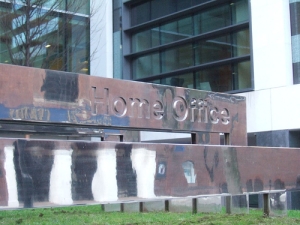Open source makes inroads into government IT

Open-source products still have a way to go before they are adopted widely in government IT infrastructure, new data has shown.

Deployment of open-source products at the Home Office and other government departments varies widely, new figures have shown. Photo credit: Nathan Collins/Flickr
Departments across government are making use of open-source products for server management and workspace IT, according to the results of Freedom of Information requests released by the BBC on Monday. However, proprietary stalwarts such as Microsoft, Oracle, IBM and VMware had much more of a foothold in the organisations polled.
The broadcaster asked the Home Office, the Ministry of Defence, the Department of Health and seven other departments how much open-source software they used, as well as how much of their budget goes on proprietary software.
"This... does provide insights into the kind of software civil servants are buying, and why open-source providers may struggle to get a hearing," the BBC's technology correspondent, Rory Cellan-Jones, wrote in a blog.
Each of the departments presented its data in a different format, suggesting that there is no single template for tracking usage and spending on IT across government. This can hold true even within departments: the Ministry of Defence told the BBC that "there is no centrally held record of software (proprietary or open source) held across the MoD," Rory Cellan-Jones said.
Varying software
The variation also shows in choice of software. The Department for Transport uses Red Hat Linux to help it manage technology from Oracle, but other departments, such as the Department for Work and Pensions, use comprehensive proprietary products from single vendors such as IBM.
Open-source software has made inroads at the Ministry of Defence, which appears an enthusiastic adopter of it for server management, automation and setup. Red Hat Linux, Suse Enterprise Server, MySQL Server, JBoss and Apache are all in use across the department.
Elsewhere, the Department for Education uses Suse Linux 11.4 for maintenance of its research and statistics gateway, along with a Putty-SSH secure connection client. The Department of Health deploys WAMP (Windows, Apache, MySQL and PHP) and LAMP (Linux, Apache, MySQL and PHP) stacks for running internal WordPress sites on top of Linux and Windows operating systems. The Department for Transport listed Red Hat Enterprise Linux as an all-purpose server, firewall, repository and mail managing suite.
Many departments use Mozilla Firefox, alongside a range of open-source workspace IT, such as Komodo Edit 5 and the Gimp 2.8 image-editing program.
The data also showed that departments use open-source technologies in tandem with proprietary software. Defra has NodeXL to help Microsoft Excel do network discovery. The Department for Transport has Red Hat Linux to help it manage Oracle deployments, and the Department for Education employs Crimson Editor to manage Microsoft Visual Basic scripts.
However, while some departments seem keen to pair open-source technologies with proprietary ones, other departments disclosed no use of open-source software at all.
In July, MPs criticised the procurement methods for government IT projects, saying that it is over-reliant on a small "oligopoly" of large suppliers and calling it a "recipe for rip-offs". In a select committee report, the politicians said that government departments have "wasted an obscene amount of public money" on IT supplies and services, sometimes paying up to 10 times the going rate for a proprietary product.
Hints at government IT infrastructure
The software listed in the data suggests the types of hardware and technologies in use across government departments. For example, VMware's vSphere 4 virtualisation suite is mentioned more often than Windows Server, suggesting there are more VMware virtualised machines than Hyper-V ones.
The Department for Work and Pension buys in IBM software to manage IBM hardware. It also appears to have some Sparc hardware, as it pays £6.1m to Oracle for Sparc-specific management tools and other items. On a smaller scale, cloud technology from Rackspace cost the Department for Culture, Media and Sport almost £3,300.
Where mentioned, the proprietary networking software bought in by departments is supplied by Cisco. When it comes to mobile communications, two departments pay for BlackBerry Enterprise Server.
In March, Cabinet Office minister Francis Maude introduced a plan for government IT strategy to focus more on open-source software, among other measures. The strategy will provide a toolkit for open-source procurement, as well as set up an open-source advisory panel and an open-source implementation group.Get the latest technology news and analysis, blogs and reviews delivered directly to your inbox with ZDNet UK's newsletters.